
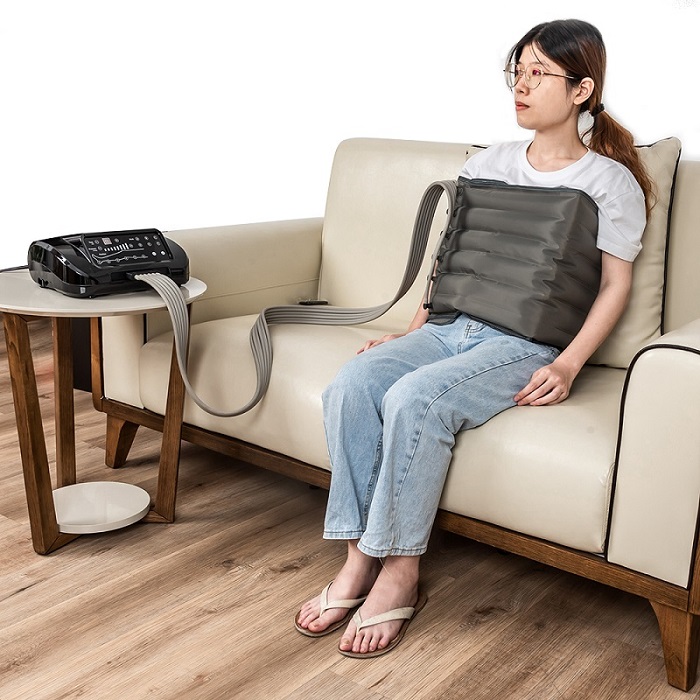
In the precisely functioning "machine" of the human body, the lymphatic system is like a silent river, quietly eliminating metabolic wastes and defending against pathogen invasion. In recent years, abdominal lymphatic drainage has gradually moved from the medical field into the public eye and become a new focus for enhancing immunity and optimizing health. Scientists have discovered that activating the abdominal lymphatic network through scientific drainage methods can not only accelerate the excretion of toxins but also potentially build an invisible defense barrier for the body. The relationship between the lymphatic system and immune function is inseparable. As the "drainage system" of the human body, lymphatic vessels are responsible for recovering excess fluid, protein and metabolic waste from the interstitial Spaces and transporting them back into the bloodstream. The abdomen, as an area where lymphatic vessels are densely distributed, can be regarded as the "hub" of the entire body's lymphatic circulation. Studies have shown that poor abdominal lymphatic drainage may lead to toxin accumulation, chronic inflammation, and even weaken the activity of immune cells. Stimulating the abdomen through manual massage or professional equipment (such as lymphatic drainage massage machines) can promote the flow of lymph fluid and help immune cells patrol and fight more efficiently. Modern technology provides a more precise solution for abdominal lymphatic drainage. Traditional Lymphatic drainage massage requires professional technicians to operate, while the new type of Lymphatic drainage massage machine can precisely activate the deep lymphatic vessels in the abdomen by simulating the gentle pressing and vibration of the human hand. Furthermore, the air compression massage machine has gradually been applied in home health care. Its segmented inflation design can simulate muscle contractions and promote the flow of lymph fluid towards the heart. These devices not only simplify the operation process, but also make daily lymphatic care possible. The health benefits of abdominal lymphatic drainage are being confirmed by an increasing number of studies. A trial published in Frontiers in Immunology pointed out that people who underwent regular abdominal lymphatic drainage had significantly enhanced immune markers (such as natural killer cell activity), and the incidence of upper respiratory tract infections was reduced by 30%. Clinical cases also show that after surgery, patients can effectively reduce the risk of swelling and infection by accelerating lymphatic circulation through abdominal drainage. For office workers who sit for long periods or patients with metabolic syndrome, this therapy may become a breakthrough for improving sub-health conditions. From the laboratory to home Settings, abdominal lymphatic drainage is redefining the way health management is carried out. It is no longer a single medical means, but a lifestyle that integrates technology...
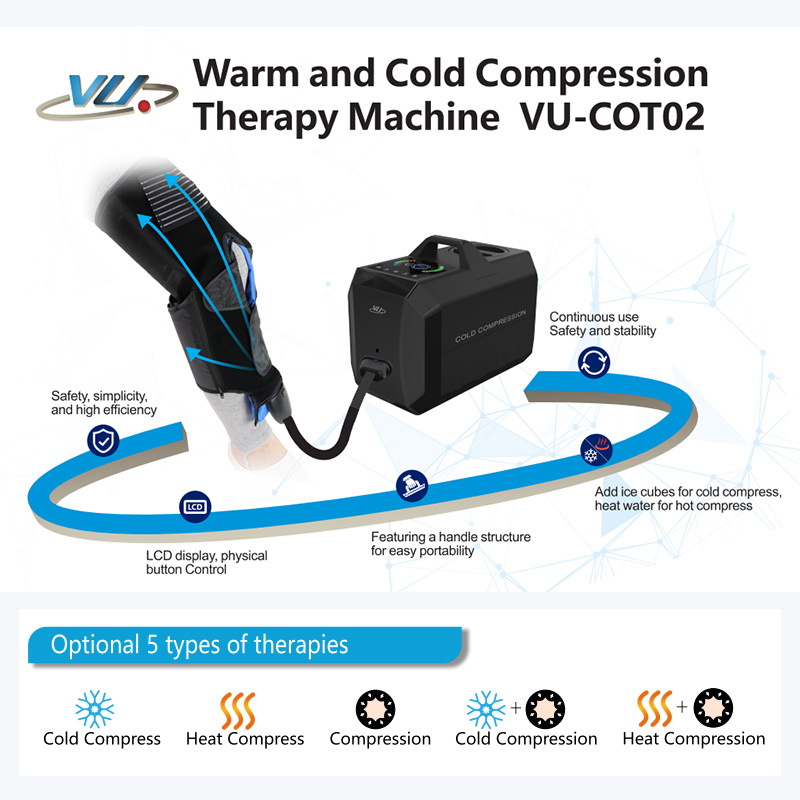
In the field of chronic pain management, a quiet revolution is taking place. Traditional treatment methods that rely on painkillers or hormone injections are gradually being replaced by non-invasive and sustainable physical therapies, among which rehabilitation devices centered on dynamic cold and hot circulation technology have become the focus. A 65-year-old patient with periarthritis of the shoulder successfully reduced the Visual Analogue Scale (VAS) pain index from 7 to 3 by using the Cryptherapy Recovery System for 8 consecutive weeks. At the same time, the range of motion of the shoulder joint increased by 40% and the number of hormone injections was reduced to zero. This case reveals the breakthrough potential of non-pharmaceutical treatment in the management of chronic pain. Periarthritis of the shoulder, as a disease with a high incidence among middle-aged and elderly people, traditional therapies often fall into a "remission - recurrence" cycle. Patients need to take non-steroidal anti-inflammatory drugs for a long time or receive intra-articular hormone injections, but the side effects of the drugs and the injection risks have always been unavoidable problems. The hot and cold compression therapy machine provides a new way to break this predicament through the alternating action mechanism. This device takes precise temperature control technology as its core. In the hot compress mode, it promotes local blood circulation and relaxes muscle spasms. Then, it seamlessly switches to low-temperature therapy to inhibit the release of inflammatory factors, forming a dual closed loop of "repair - pain relief". Clinical evidence shows that the innovative design of the iceless therapy machine has significantly improved patient compliance. Traditional cold therapy requires frequent replacement of ice packs, while this system achieves a wide range of adjustment from -5℃ to 45℃ through semiconductor temperature control technology, avoiding the risk of frostbite while extending the duration of a single treatment session. Combined with the intelligent compression function, the device can simulate the techniques of a rehabilitation therapist to perform dynamic compression on the shoulder joint, promoting lymphatic return and softening adhered tissues. The above-mentioned 65-year-old patient achieved an abduction Angle recovery from 90° to 150° in the fourth week of treatment, and daily actions such as dressing and combing hair were no longer restricted. Experts in the field of Body pain relief point out that the core advantage of hot and cold circulation therapy lies in "multi-target intervention". Hot compresses dilate blood vessels and increase oxygen supply, while low temperatures constrict blood vessels and reduce the accumulation of metabolic wastes. This periodic stimulation can reshape the microenvironment of joints and activate the release of endogenous analgesic substances. More importantly, the AI algorithm equipped on the device can adjust t...

In the high-intensity competition of professional sports, injury management is directly related to performance and an athlete's career. In recent years, a device that integrates cold compress, hot compress and dynamic compression therapy - the hot and cold compression therapy machine - has become the standard equipment in the training rooms of top league teams such as the NBA and NFL. This device demonstrates the revolutionary value of the "golden 48 hours" intervention in sports injury first aid scenarios through precise temperature control and intelligent pressure regulation. Take ACL (anterior cruciate ligament) tear, which basketball players fear the most, as an example. Inflammation control and muscle protection within 72 hours after the operation are the keys to recovery. Traditional ice packs have drawbacks such as large temperature fluctuations and easy frostbite. However, the iceless therapy system adopted by professional teams uses semiconductor instantaneous cooling technology to keep the temperature of the treatment area constant at 5-10℃. Combined with a gradient pressurization of 30-120mmHg, it can not only inhibit the release of inflammatory factors but also prevent muscle fibrosis through pulsed pressure massage. Clinical data show that the joint swelling of athletes using this cold therapy machine decreased by 62% 48 hours after surgery, and the atrophy rate of muscle cross-sectional area decreased by 47% compared with conventional treatment. The director of Sports medicine of an NFL team disclosed that the Iceless Cold Compression Machine,As a Professional Sports Recovery Device they introduced in the 2024 season accelerates tissue repair through a hot and cold cycle mode (alternating between 15 minutes of cold therapy and 10 minutes of heat therapy). In the case of a star quarterback with a collateral ligament strain in his knee, the intelligent program built into the device automatically matched the treatment curve based on the MRI injury grade, enabling him to resume ball training three weeks earlier. This model is equipped with 7 types of dedicated sleeves that can perfectly fit high-risk areas such as the shoulder sleeves and ankle joints, ensuring precise energy transmission. The practice of NBA teams further confirms its value. A strong team in the Western Conference has included equipment in the "load management" system for three consecutive years, providing players with immediate post-game recovery during back-to-back schedules. When the star player suffered from quadriceps femoris contusion in the playoffs, the treatment team reduced the hematoma area by 70% within 30 minutes through cold therapy at -5℃ combined with 30mmHg compression. The next day, the player could complete low-intensity shooting training. This concept of "treatment as training" is reshaping the injury response model in professional sports. With technological iteration, a new generation of devices has achieved interconnection with the Internet of Thi...
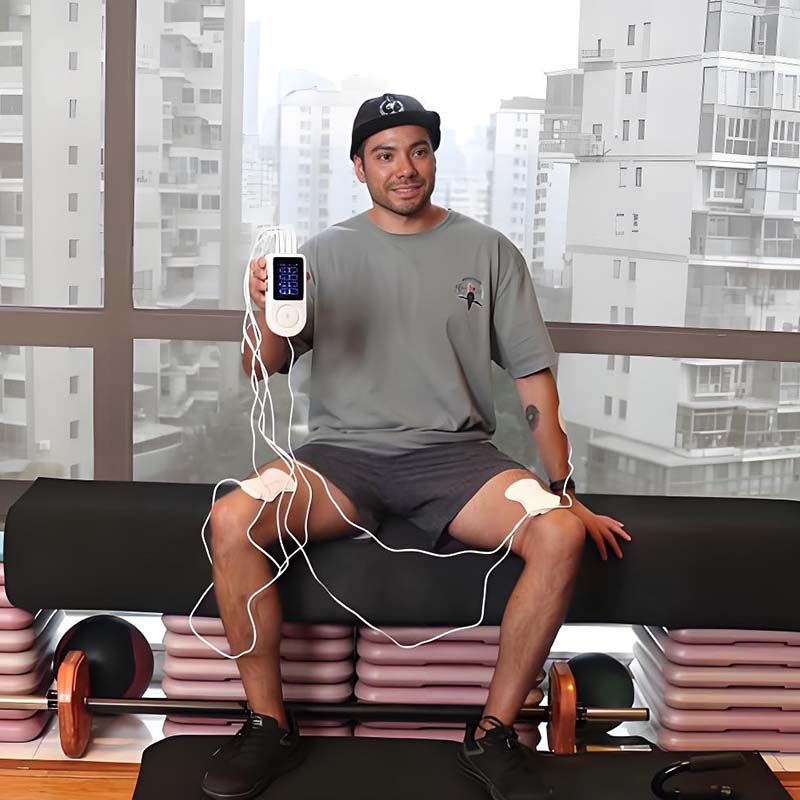
On the path of pursuing health and outstanding athletic performance, sports injuries have always been a major challenge faced by fitness enthusiasts and professional athletes. Whether it is muscle strain, joint pain or chronic sports injury, all of them may affect the training progress and competitive state. However, with the continuous advancement of technology, a massage device that integrates Tens (transcutaneous electrical nerve stimulation) and EMS (muscle electrical stimulation) technologies - the Tens EMS massage device - is quietly initiating a new revolution in sports rehabilitation, bringing brand-new solutions for fitness and the prevention of sports injuries. The Tens EMS massage device is not a simple massage tool, but an innovative product integrating multiple advanced technologies. Among them, the adjustable Tens Massager, as an important component, is highly adjustable. Users can precisely adjust the frequency, intensity and treatment time of the electrical pulses according to their own needs. This personalized setting enables the device to better adapt to the physical conditions and rehabilitation needs of different users. Whether it is to relieve muscle soreness after exercise or to treat chronic pain in specific areas, it can achieve ideal results. In terms of improving sports performance, the wireless Tens Unit shows unique advantages. It breaks free from the constraints of traditional wired devices, allowing users to move freely during exercise without worrying about the interference of cables. By sending weak electrical pulses to the muscles, the wireless Tens Unit can simulate natural nerve impulses and promote the contraction and relaxation of the muscles. This kind of stimulation can not only enhance muscle strength, but also improve the coordination and reaction speed of muscles, thereby helping athletes perform at a better level in competitions. For instance, after training with the wireless Tens Unit, some sprinters found that their reaction time at the start was significantly shortened, and the strength and explosive power of their leg muscles were also significantly enhanced. The electronic Pulse Muscle Stimulator plays a crucial role in the prevention of sports injuries. Before exercising, using the electronic Pulse Muscle Stimulator to preheat and activate the muscles can increase the blood circulation of the muscles, raise the temperature and elasticity of the muscles, and reduce the risk of muscle strain. After exercising, it can help relieve muscle fatigue, promote the metabolism of lactic acid and accelerate the recovery of muscles. For example, when basketball players use the electronic Pulse Muscle Stimulator to stimulate their leg muscles before the game, it can enable the muscles to better adapt to high-intensity exercise and reduce the occurrence rate of sports injuries. The Electric Ems Body Massager is a powerful tool dedicated to muscle rehabilitation and body shaping. It directly stimulates muscle fibe...
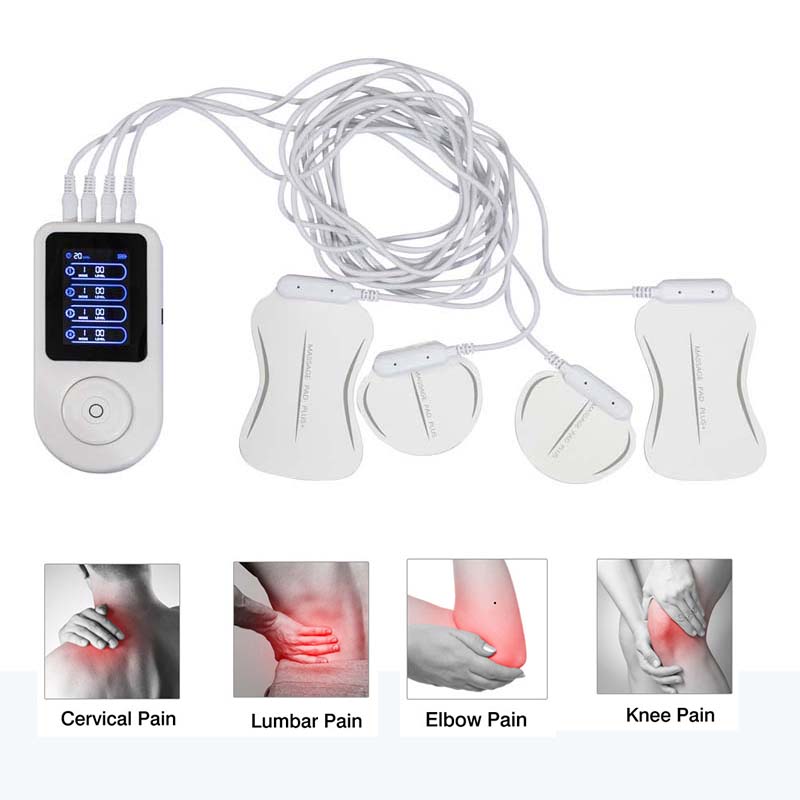
In the fast-paced modern workplace and academic life, white-collar workers, students and other people who sit for long periods of time work or study at desks, and stiffness and soreness in the shoulders and neck have become common problems. Maintaining the same posture for a long time causes continuous tension in the shoulder and neck muscles and poor blood circulation. This not only affects work efficiency and learning state but may also trigger a series of health problems. Against this backdrop, the four-channel physiotherapy device, with its unique functions and technologies, has brought new hope for shoulder and neck relaxation to people who sit for long periods. Technical principle: TENS and EMS work in synergy The core technology of the four-channel physiotherapy device lies in the perfect combination of TENS (transcutaneous Electrical nerve Stimulation) and EMS (muscle electrical stimulation). The TENS unit for shoulder pain and TENS unit for neck pain modes input specific low-frequency pulsed currents into the human body through the skin, acting on sensory fibers and blocking the transmission of pain messages to the brain, thereby effectively alleviating shoulder and neck pain. This non-pharmaceutical pain relief method avoids the possible side effects of drugs and provides a safe and convenient treatment option for patients with shoulder and neck pain. The EMS massager mode simulates the brain's bioelectrical signals, "deceiving" the muscle nerves and causing the muscles to contract autonomously. This "passive" fitness method does not impose additional burdens on the joints, but it can enhance muscle endurance and support, and relieve the pressure on the joints and bones. For sedentary people, EMS technology can help them exercise their shoulder and neck muscles, improve muscle condition, and fundamentally alleviate shoulder and neck stiffness. Scenario-based usage guide: Relieve shoulder and neck discomfort anytime and anywhere (1)Office scene: The "Invisible Physiotherapist" at the workstation For white-collar workers, it would be great if they could easily relieve stiffness in their shoulders and necks in the office. The portable design of the four-channel physiotherapy device enables it to be placed at the workstation for use at any time. During breaks at work, such as before the lunch break or after completing an important task, simply wear the physiotherapy device on the shoulder and neck area and select the appropriate mode and intensity. For example, you can first use the TENS mode to relieve pain, and then switch to the EMS mode for muscle training. This intermittent usage method will not affect normal work, but can effectively relieve shoulder and neck fatigue, allowing white-collar workers to maintain a comfortable state even in their busy work. (2)Learning scene: The "Relaxation companion" beside the desk The student group also faces shoulder and neck problems caused by prolonged sitting. During the learning process, reading ...
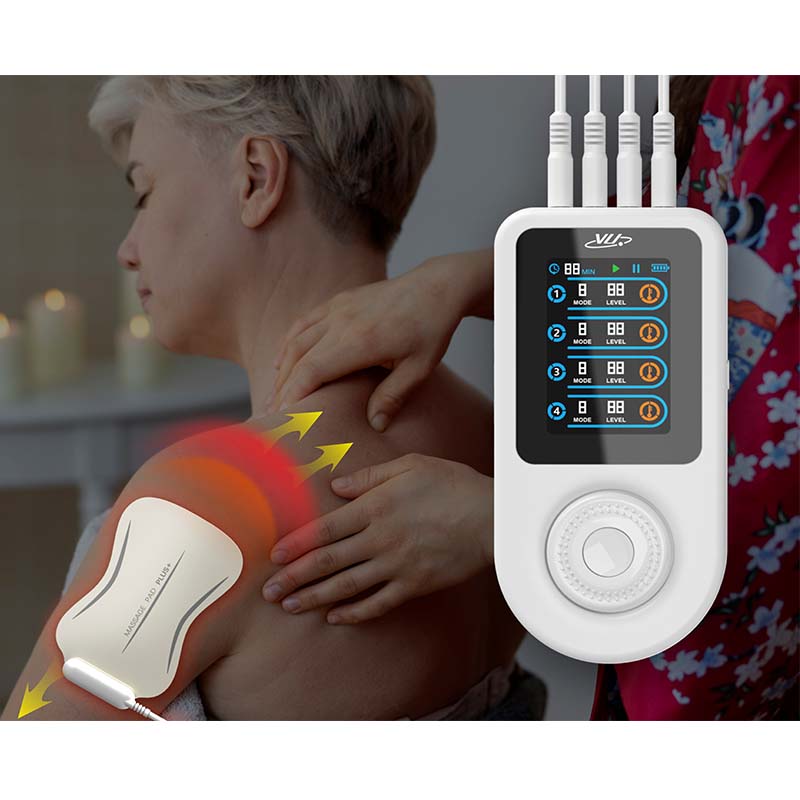
With the improvement of health awareness, electrical stimulation devices such as Tens unit (transcutaneous nerve electrical stimulator) and EMS Massager (electrical muscle simulator) have gradually come into the public view. This type of device stimulates nerves or muscles through microcurrents and is widely used in scenarios such as pain relief, promoting muscle recovery, and body massage. However, while consumers enjoy the convenience of technology, they can't help but have doubts about the safety of the devices. Recently, authoritative institutions and industry experts have provided professional answers to hot issues such as "whether electrical stimulation is safe" and "the critical point of current intensity of four-channel physiotherapy devices". Authoritative certification: The safety of electrical stimulation equipment is well documented In fact, the safety of electrical stimulation equipment has long been internationally recognized. Take transcutaneous electrical nerve stimulation (TENS) as an example. Its working principle is to release low-frequency electrical pulses through electrode patches on the skin surface to block the transmission of pain signals to the brain. According to the standards of the International Electrotechnical Commission (IEC), the output current of household TENS devices must be strictly controlled within a safe range, typically not exceeding 0.5mA to 2mA. This value is far below the human body's tolerance threshold for current. Experimental data show that when used properly, the TENS device does not cause damage to nerves or muscles; instead, it can effectively relieve acute or chronic pain. In addition, the "General Requirements for Basic Safety and Performance of Transcutaneous Acupoint Electrical Stimulation Devices in Traditional Chinese Medicine" (ISO/NP24996), led by the China Academy of Chinese Medical Sciences, has been approved for international project initiation. This standard clearly stipulates the current intensity, frequency range and safety performance of electrical stimulation equipment. This measure not only provides safety guarantees for consumers, but also promotes the international development of electrical stimulation technology. Four-channel physiotherapy device: How to Define the critical point of current intensity? For multi-channel physiotherapy equipment (such as four-channel physiotherapy devices), the control of its current intensity is particularly crucial. Take the DLZ-C medium-frequency therapy instrument as an example. This device adopts a four-channel eight-channel design. Under the reference load (500Ω), the maximum output current is 100mA. However, in actual use, the output intensity of the instrument can be adjusted step by step within the range of 0-99 steps, and the increment of each step does not exceed 1mA or 1V. This design ensures that users can flexibly adjust the current intensity according to their tolerance level, avoiding discomfort caused by excessive current. It is ...
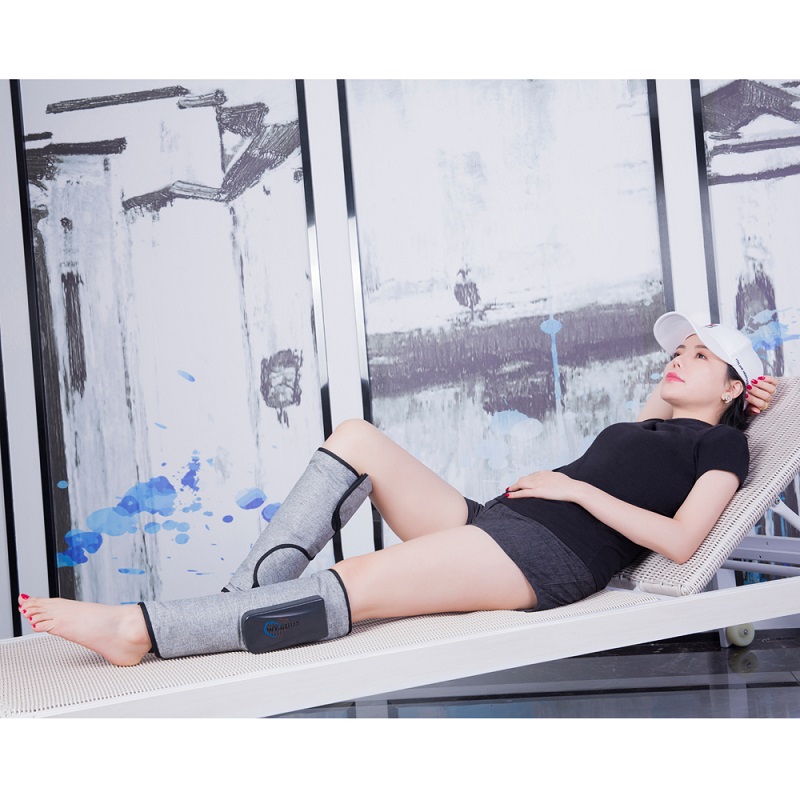
Postoperative deep vein thrombosis (DVT) is a major health threat for long-term bedridden patients. According to statistics, the incidence of DVT after untreated abdominal surgery is as high as 40%, and the pulmonary embolism caused by DVT is one of the main causes of postoperative death. Traditional prevention methods rely on anticoagulant drugs, but the risk of bleeding is always hanging over doctors and patients like the sword of Damocles. Nowadays, an innovative physical prevention method - pneumatic therapy is becoming a new favorite in the medical community, and its safety and effectiveness have aroused wide concern. Air compression therapy System: the pioneer of non-invasive guardian The air compression treatment system simulates the squeezing effect of muscle contraction on the veins through the leg compression massage boots that are periodically filled with air to promote the blood return of the lower limb veins. This kind of physical therapy completely avoids the burden of liver and kidney caused by drug metabolism and bleeding complications. Recent clinical studies have shown that patients using air compression leg massagers have a 28% lower incidence of postoperative DVT than those in the drug group, and there are no serious device-related adverse reactions. Data comparison highlights security advantages A controlled study in the vascular surgery department of a top-three hospital was convincing: 1,200 orthopedic postoperative patients were divided into a drug group (low-molecular-weight heparin injection) and a barometric group (twice-daily air-wave pressure treatment). The results showed that the incidence of DVT in the two groups was 8.3% and 5.7%, respectively, while the incidence of bleeding events in the barometric group was only 1/5 of that in the drug group. Experts pointed out that this non-drug intervention is particularly suitable for people with high blood risk, such as those with coagulation disorders or limited early postoperative activities. Smart technology enables precise prevention A new generation of DVT prevention devices has been equipped with smart sensing technology. Taking a brand of air compression treatment system as an example, its built-in pressure sensor can monitor the change of limb circumference in real time and automatically adjust the pressure gradient to ensure the accuracy of treatment. The leg compression massage boots equipped with the equipment adopt the medical-grade gradient pressure algorithm, which decreases from ankle to thigh in turn, and perfectly replicates the muscle pumping effect under physiological conditions. According to patient feedback, this "thinking leg massager" improves treatment comfort by 40%. Medical consensus: Physical prevention should be standard The latest guidelines from the International Society for Vascular Surgery clearly state that barometric therapy should be used as a first-line preventive measure for patients with low - and medium-risk surgery. A number of domes...
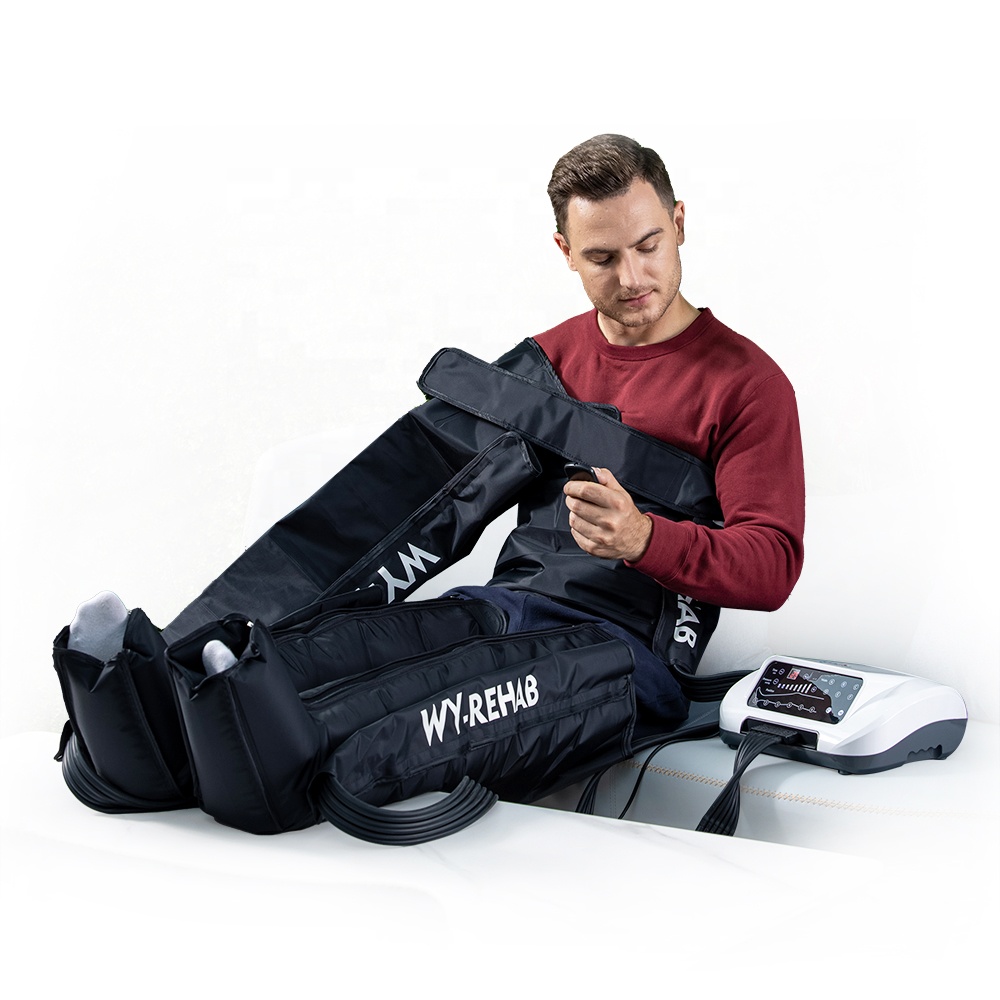
In the field of health technology, air compression massagers have long been renowned for their ability to relieve leg fatigue, reduce swelling and improve blood circulation. But what if we told you that these devices - often referred to as leg compression massagers or air compression leg boots - can do much more than that? In addition to their primary function of targeted relief from leg fatigue, these innovative gadgets are quietly becoming multi-purpose tools for personal care routines. 1. From legs to arms: Multi-purpose conversion While leg compression boots are designed to wrap the lower limbs in rhythmic air pressure, their core technology is not limited to one part of the body. By combining different accessories, such as arm sleeve, waist sleeve, etc., the air compression massage machine is suitable for massage of the whole body. 2. Your feet 'new best friend Feet, which are often neglected in daily self-care, can also benefit from an air compression massage. By putting your foot into a modified device or using a specific foot attachment (if your device supports it), you can experience a rejuvenating massage for plantar fasciitis, swollen ankles, or the stress accumulated from standing all day. It's like having a personal masseuse for your feet at the push of a button. 3. Rehabilitate your partner after exercise More and more athletes and fitness enthusiasts are turning to air compression boots, not only for leg recovery, but also as part of their overall post-workout routine. The adjustable pressure setting allows the user to customize the intensity, making it suitable for massaging other muscle groups such as calves, thighs, and even the abdomen (which requires careful and proper guidance). This versatility means that one device can replace multiple recovery tools, saving space and money. 4. Innovative applications in daily life Beyond the obvious, creative users have found unexpected ways to incorporate air compression massagers into their daily lives. For example, some people use it to help drain lymph, especially in areas prone to swelling or fluid retention. Others have tried using the device on their hands to relieve symptoms of carpal tunnel syndrome or arthritis-related discomfort. 5. Technology is an enabler The magic behind these versatile uses lies in the air compression technology itself. Unlike traditional massage tools, air compression devices rely on controlled air flow to simulate the natural rhythmic contraction of muscles, promoting blood circulation and oxygen delivery. When applied creatively, this technology can be adapted to different body parts, making it a scalable solution for local recovery and relaxation. 6. The call to explore With the continuous development of the health industry, the air compression leg massager is no longer a single trick. Its ability to adapt to different body parts and conditions makes it a valuable addition to any self-care program. Whether you're a professional athlete, a busy office wor...
Categories
New Products
Home Use Air Compression Massage Mat for Body Pain Relief Read More
Multifunctional Electric Hospital Bed for Bedsore Prevention Read More
Air Compression Therapy Leg Foot Massager Manufacturer Read More
Wholesale DVT Prevent Device 6 Chamber Leg Compression Boots Read More
8 Chamber Rechargeable Lymphatic Drainage Legs Massage Machine Read More
Customized Air Compression Pants for Leg Lymphatic Drainage Read More
Whole Body Lymphatic Drainage Pneumatic Compression Massage Device Read More
Wholesale Hot and Cold Therapy Machine for Pain Relief Read More
Copyright © 2025 Xiamen Weiyou Intelligent Technology Co.,Ltd. All Rights Reserved. Power by

IPv6 network supported